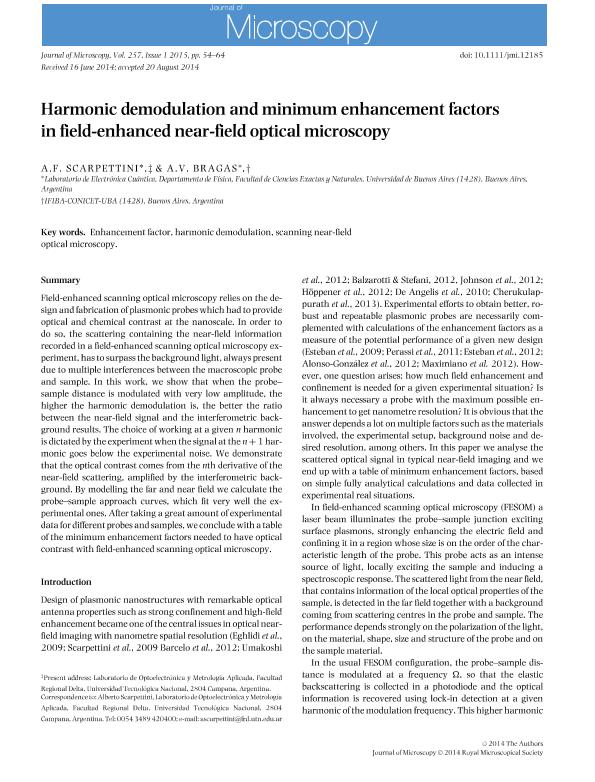Artículo
Harmonic demodulation and minimum enhancement factors in field-enhanced near-field optical microscopy
Fecha de publicación:
01/2015
Editorial:
Wiley Blackwell Publishing, Inc
Revista:
Journal Of Microscopy-oxford
ISSN:
0022-2720
Idioma:
Inglés
Tipo de recurso:
Artículo publicado
Clasificación temática:
Resumen
Field enhanced scanning optical microscopy (FESOM) relies on the design and fabrication of plasmonic probes which had to provide optical and chemical contrast at the nanoscale. In order to do so, the scattering containing the near field information recorded in a FESOM experiment, has to surpass the background light, always present due multiple interferences between the macroscopic probe and sample. In this work, we show that when the probe-sample distance is modulated with very low amplitude, the higher the harmonic demodulation is, the better the ratio between the near field signal and the interferometric background results. The choice of working at a given n harmonic is dictated by the experiment when the signal at the n+1 harmonic goes below the experimental noise. We demonstrate that the optical contrast comes from the nth-derivative of the near field scattering, amplified by the interferometric background. By modeling the far and near field we calculate the probe-sample approach curves, which fit very well the experimental ones. After taking a great amount of experimental data for different probes and samples, we conclude with a table of the minimum enhancement factors needed to have optical contrast with FESOM.
Archivos asociados
Licencia
Identificadores
Colecciones
Articulos(SEDE CENTRAL)
Articulos de SEDE CENTRAL
Articulos de SEDE CENTRAL
Citación
Scarpettini, Alberto Franco; Bragas, Andrea Veronica; Harmonic demodulation and minimum enhancement factors in field-enhanced near-field optical microscopy; Wiley Blackwell Publishing, Inc; Journal Of Microscopy-oxford; 257; 1-2015; 54-64
Compartir




